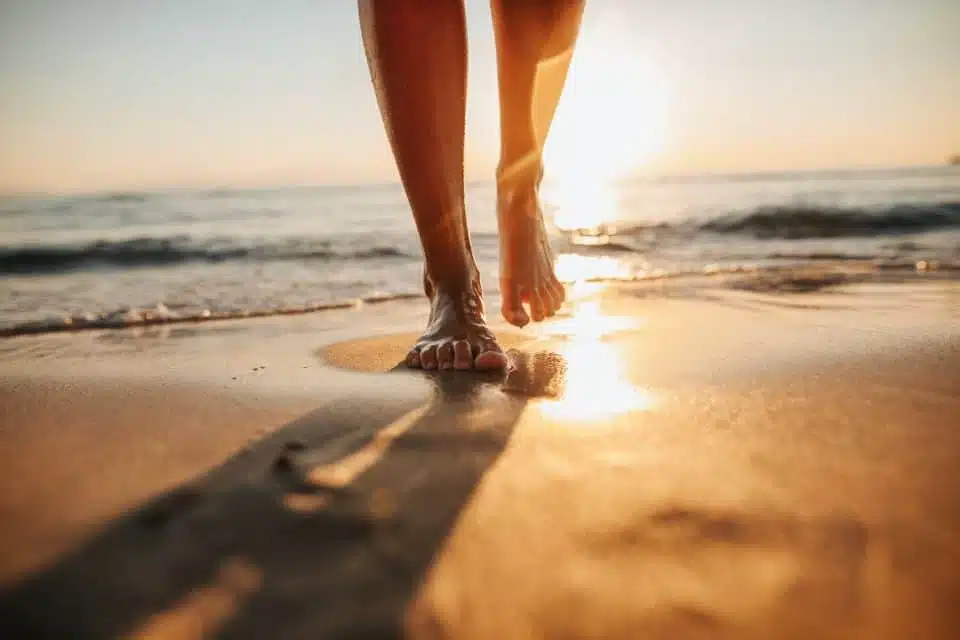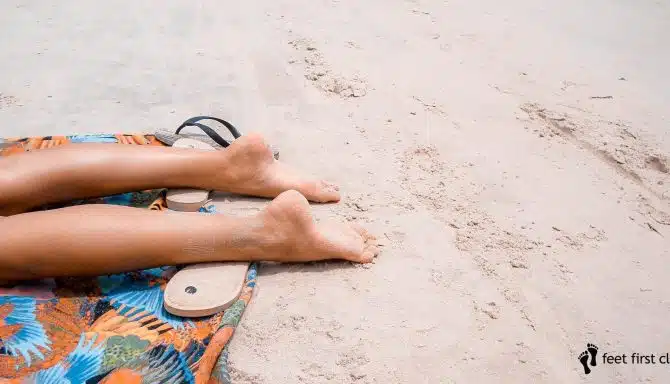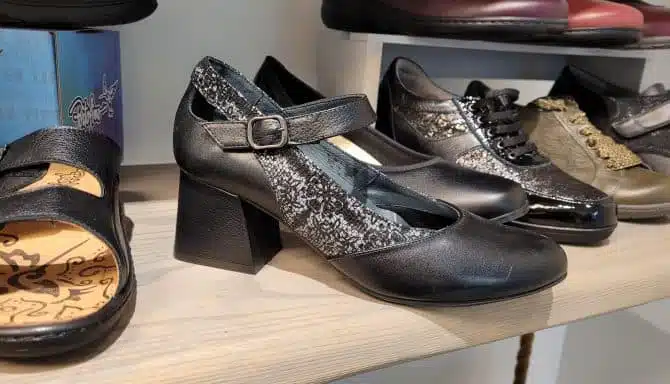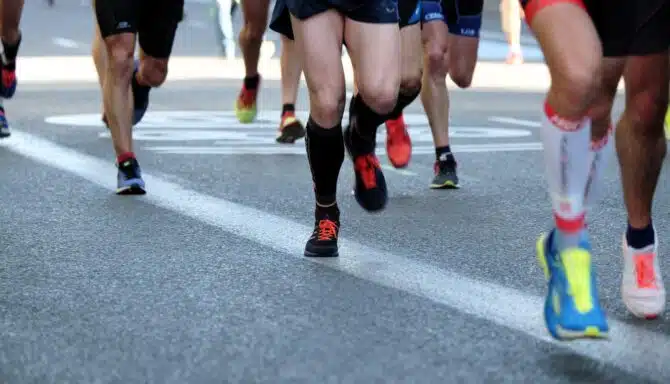Summer is still in the air in Toronto, and that means going barefoot! In general, it’s pretty harmless to feel the sand between your toes and walk barefoot around your patio in the summertime. That said, it’s important to wear supportive sandals and sneakers most of the time. Going barefoot for too long can harm our foot health. From infections to injuries, it’s good to be aware of the dangers of being barefoot in the summer. Likewise, diabetes patients and people with foot conditions need to understand why you shouldn’t go barefoot very often, if at all.
3 Main Dangers of Being Barefoot
- Worsens foot conditions
- Higher risk of injury
- Higher risk of infection
Danger #1: Worsens Foot Conditions
Walking barefoot for too long outside can make certain foot conditions much worse. This is especially true for plantar fasciitis and diabetes.
In the summer, we tend to walk outside leisurely on patios and decks without shoes. Afterwards, without thinking, we can go back inside and continue to be barefoot. However, walking barefoot for hours throughout the day can affect the plantar fascia. This occurs due to the prolonged lack of crucial support needed for people with plantar fasciitis, specifically, impact absorption, cushioning, and arch support. This increases strain on the ligaments and joints in your feet. The hard surface also wears away the fatty pad on your heel, which puts extra pressure on your heel.
The same can also be said for people with arthritis, Achilles tendonitis, and other foot conditions affecting the joints and muscles in the lower body. Running and exercising barefoot in the summer can worsen the symptoms of these conditions. Those who were not suffering from these conditions before may also put themselves at risk by running barefoot.
Diabetes patients should also avoid walking barefoot at all costs. Even inside, supportive footwear is key. Diabetes compromises the immune system and causes poor circulation and nerve damage (diabetic neuropathy). These can seriously harm people with diabetes if they stub their toes or drop something on their feet. Diabetes.org notes that while these are minor occurrences for many of us, these accidents can lead to major complications, such as infections and foot ulcers, if you have diabetes.
In the summer, people with diabetes should always make sure their feet aren’t exposed. A tiny twig or splinter on a boardwalk could seriously harm a diabetes patient, even while at the beach. Furthermore, while it may seem harmless in the summer to walk down your driveway, the hot pavement can actually burn the bottoms of the feet or even cause an infection.
Danger #2: Higher Risk of Infections
Walking barefoot for too long is also a risk factor for fungal infections like athlete’s foot and fungal toenails. Fungal infections are highly contagious and through direct contact between the skin and an infected surface, and vice versa. If someone with a foot infection used one of these shared spaces before you, you are putting yourself at risk. Plus, if you have a fungal infection in your feet, you can also spread it to others. To prevent getting a fungal infection, you should always wear protective footwear in shared spaces such as pool and beach bathrooms, changing rooms, and showers. Also keep your feet clean, dry, and deodorized with a deodorant cream or spray.
In addition to fungal infections, damp warm shared spaces like pools, public washrooms, change rooms, locker rooms, and showers are also ripe breeding grounds for plantar warts. Like fungal infections, plantar warts are contagious and spread when the skin comes in direct contact with an infected surface. So, if you’re walking around barefoot on the same wet pool deck that someone with a plantar wart also walked on, you can get them too. Again, the best way to prevent this is to wear footwear (like flip-flops) in shared public spaces.
Danger #3: Higher Risk of Injury
Picture this; you’re on the beach enjoying the last days of summer and go for a light run along the water without your shoes. It sounds exhilarating, but it may be putting you at risk of sustaining a foot or ankle injury. While some experts claim that barefoot running can reduce the risk of tibial stress fractures (shin fractures), it puts runners at risk of sustaining metatarsal stress fractures (foot fractures).
Lastly, running barefoot puts a lot more pressure on your ankles than when you’re sporting comfortable footwear. When you run barefoot, you are performing what is known as forefoot striking. Rayner & Smale note that this can put more pressure on your ankle joints, causing ankle pain and increasing the risk of an ankle injury. Forefoot striking also burdens your calf muscles more than running with sneakers.
Going Barefoot? Don’t Forget Your Foot Health!
Summer and vacations are exciting times to let loose and ditch your shoes on the beach, at the pool, and on your peaceful patio. However, at Feet First Clinic, we think it’s important to present the dangers of going barefoot so you can make good decisions and maintain happy and healthy feet.
If you need to see a Toronto foot specialist, reach out to us! We’re confident in our ability to help inform you and solve your concern with the least amount of discomfort possible. Call us even to ask about a quick question and we’d be happy to point you in the right direction!
Call us at 416-769-3338 or Book Your Assessment Today!













